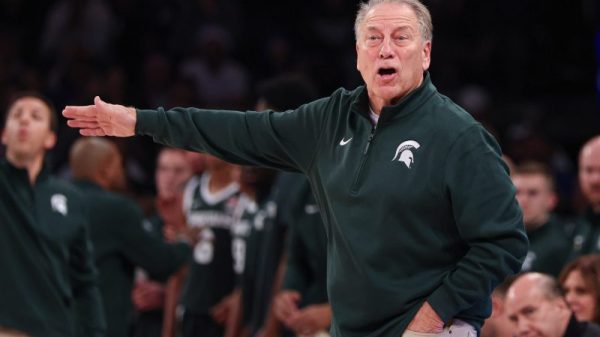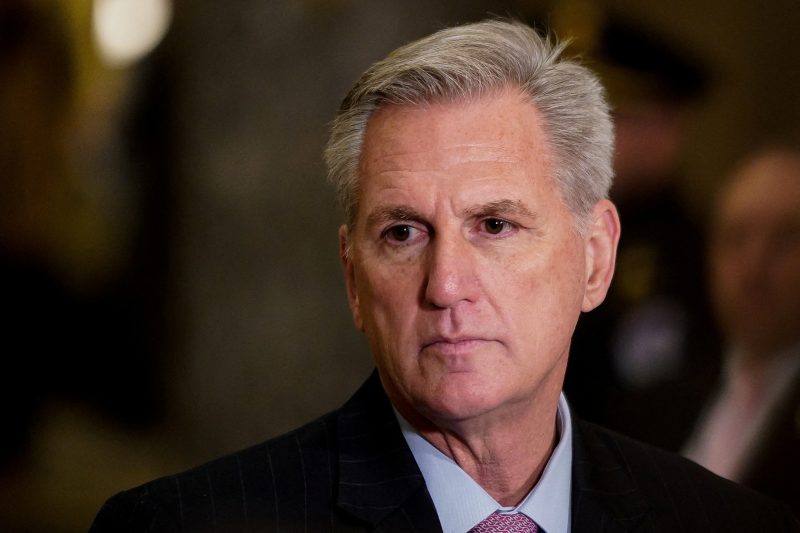“Just in the last four years that Democrats were in the majority, they increased discretionary spending by 30 percent. When Republicans were in the majority for the eight years prior, they didn’t increase it by $1.”
— House Speaker Kevin McCarthy (R-Calif.), in an interview on “Sunday Morning Futures,” Jan. 15
McCarthy has a shiny new talking point he has rolled out as Republicans seek a showdown with the White House over raising the debt ceiling. But it’s one of those cleverly misleading claims designed to flummox people who do not closely follow the budget debates in Washington.
Let’s dig into the numbers.
The debt limit is really what filmmaker Alfred Hitchcock used to call a “MacGuffin” — a device used to propel the plot forward, even though it may be meaningless. Congress instituted the debt limit in 1917, during World War I, so that it could stop having to approve every single spending request by the Treasury — but still have a measure of control over spending.
Even under the most conservative budget plans, the United States would have to keep adding to the national debt to meet all sorts of obligations, such as Social Security and Medicare payments. So the debt limit will have to be raised or suspended, one way or the other. Treasury Secretary Janet L. Yellen, in a letter to McCarthy last week, said the debt limit would be reached on Thursday and only “extraordinary measures” by Treasury would stave off default, and then only until June.
House Republicans believe they can use the looming debt limit crisis to force the White House to agree to big cuts in what Washington denizens call “discretionary” spending — annual appropriations approved by Congress to fund the military, government operations and the like. The White House says it will not negotiate over the debt limit.
Discretionary spending is a relatively small part of the budget, about 30 percent, with the rest made up of mandatory spending, required by law, and interest payments on the debt. Mandatory spending, including programs such as Social Security and Medicare, cannot be reduced unless laws are changed.
Now let’s look at McCarthy’s claim. He says that during the eight years when Republicans last controlled Congress — 2010 to 2018 — discretionary spending didn’t increase at all. Then when the Democrats took control in 2019, spending went through the roof.
A quick glance at the historical tables of the White House budget office and the Congressional Budget Office would suggest that McCarthy has a point. But raw numbers don’t tell the whole story.
In 2010, outlays for discretionary spending totaled $1.347 trillion. The figure then bounced around within a narrow range between $1.347 trillion and $1.172 trillion, before landing at $1.261 trillion in 2018. Spending went up to $1.337 trillion in 2019 — and then exploded in 2020, to $1.627 trillion. (These years refer to the federal government’s fiscal year, which runs Oct. 1 to Sept. 30.)
Hmm, what happened in 2020? Oh, yes, the coronavirus pandemic tanked the economy, and the federal government scrambled to fund a vaccine. Small wonder that health spending nearly tripled that year.
But even more important, McCarthy suggests that the Republican-controlled Congresses never increased spending at all. That’s false. Spending after 2010 was held in check by a bipartisan budget deal, known as the Budget Control Act, negotiated by House Speaker John A. Boehner (R-Ohio) and President Barack Obama, along with other top leaders. In the House, the bill passed with the support of 174 Republicans and 95 Democrats.
That agreement held until 2018. At the time, Republicans controlled the White House, the House and the Senate. They decided to blow through the bipartisan spending caps set in 2011 — and boosted discretionary spending by 16 percent.
Their late-night deal, The Washington Post reported at the time, “abandons GOP claims of fiscal discipline in a stark reversal of the promises many Republicans ran on in capturing control of the House in 2010 and the Senate in 2014 as they railed against what they described as a profligate President Barack Obama.” If the bill passed, it would bring “budget increases to federal agencies large and small, from the National Institutes of Health to the National Park Service to the Election Assistance Commission.”
It passed, with the support of 145 Republicans and 111 Democrats. Ninety Republicans and 77 Democrats opposed it.
Among those voting for the bill: McCarthy himself.
We’ve been using figures for outlays — the government’s cash flow that affects budget deficits — but the GOP’s 2018 deal is reflected in figures for budget authority, which reflects the new financial obligations that federal agencies may incur. Discretionary spending jumped from $1.220 trillion in 2017 to $1.423 trillion in 2018, according to the historical tables.
“The truth of the matter is that the first two years of the Trump administration, when the Republicans had the House and the Senate, we raised spending faster than the last couple of years of the Obama administration,” Mick Mulvaney, Trump’s White House budget director at the time, told The Dispatch.
Marc Goldwein, senior vice president at the Committee for a Responsible Federal Budget, said the increases were codified in 2019 when Democrats took control. He also noted that spending increases set in 2018 probably did not flow into outlays until 2019 and 2020, making it difficult to separate the spending from congressional action.
There’s another clever aspect about this talking point. McCarthy focuses only on spending, not the federal budget deficit, which is supposedly the issue making the debt limit relevant. Republicans say the debt limit is being breached because the budget deficit is out of control. But the budget deficit also increased because of the tax cut passed by the GOP-led Congress in 2017.
McCarthy’s staff did not respond to requests for comment.
McCarthy is relying on a technicality here — the numbers suggest discretionary spending did not increase when Republicans controlled Congress — but he is ignoring what Republican leaders actually did when they controlled Congress.
Republicans cut a deal with Democrats to put controls on spending when a Democrat was in the White House — and then they busted those caps when Republicans controlled the White House, Senate and House. Moreover, the pandemic then sent spending through the roof as the government sought to stabilize businesses, help unemployed workers and search for a vaccine.
There’s no question that Democrats generally prefer to boost spending, especially on social programs, just as Republicans like to reduce federal revenue through tax cuts. Both sides have been complicit in letting federal deficits increase.
We wavered between Two and Three Pinocchios. McCarthy can point to numbers that appear to back up his point. But those numbers do not tell the full story about what happened — especially the fact that Republicans were in power when spending limits were discarded. That’s enough to tip it to Three Pinocchios.
(About our rating scale)
Send us facts to check by filling out this form
Sign up for The Fact Checker weekly newsletter
The Fact Checker is a verified signatory to the International Fact-Checking Network code of principles



























